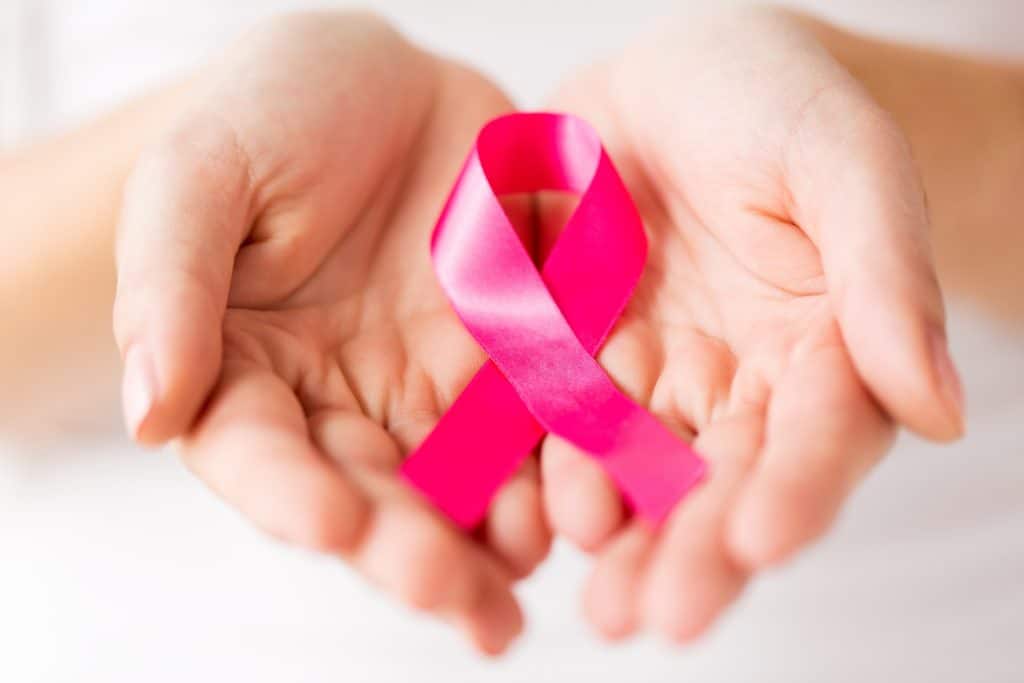October marks the annual Breast Cancer Awareness month. At Echelon Health, we know how important it is to be informed ourselves about cancer, how it can affect us and what we can do to minimise the risk of developing it.
In this post, we will be going through the most common questions and shedding some light on the ways you can help reduce the risk of developing this disease in your lifetime.
What is breast cancer?
Under normal circumstances, cells usually reproduce only when they are needed. When cells start to reproduce out of control it can create a mass of tissue known as a tumour. The name of a cancer is taken from the body part in which it originates – breast cancer forms in the breast tissue (Cleveland Clinic, 2018).
Who is most at risk?
Breast cancer is the most common type of cancer among women, other than skin cancer. In the UK, the highest number of cases are among females aged 40-54, and then 65-69(Cancer Research UK, 2021).
Ethnicity also has an impact on how likely you are to develop breast cancer and when. Patients who considered themselves Black had a median diagnosis age of 50, compared to 55 for those identifying as Asian and 62 for those identifying as White.
Additionally, among the age group that is usually invited for screenings (50-70) 55.3% of White patients had screen-detected breast cancers compared to 52.1% and 44.6% of Asian and Black patients respectively (NCRAS, 2010).
What are the common types of breast cancer?
The most common types of breast cancer include:
- Infiltrating ductal carcinoma: This cancer starts in the milk ducts that are in the breast. It can then break through the walls of the milk duct and affect the surrounding tissue. Infiltrating ductal carcinoma is the most common form of breast cancer.
- Ductal carcinoma in situ means that cancer has not spread to the outside tissue. If untreated it develops into infiltrating ductal carcinoma, however, if it is caught before that stage, it is curable.
- Infiltrating lobular carcinoma: This cancer originates in the lobules where breast milk is produced but has spread to the surrounding tissue. This is a less common form of cancer and is harder to detect with mammograms. It accounts for 10-15% of breast cancers.
- Lobular carcinoma in situ is used as a marker for lobular cancer. It is not considered a real form of cancer and serves as an indicator for increased cancer risk in either breast or both breasts. As a result of this, women who have lobular carcinoma in situ need to have regular screenings.
What are the symptoms of breast cancer?
Breast self-examination is a useful method of becoming familiar with the normal monthly changes in your breasts. It should be performed at the same time each month.
Some of the things you may note during a self-breast exam are:
- A hardened area under the skin that is marble-like
- Redness of the skin on the breast or nipple
- Bloodstained or clear discharge from the nipple
- A mass or lump which can be as small as a pea
- An area that is completely different from the rest of the skin
- A change in the look or feel of the skin on the breast or nipple
- Changes in the size, shape, or contour of the breast
- A lump in or near the breast or in the underarm that persists during the menstrual cycle
If you notice any of these symptoms it is important not to panic. Most women have lumps in their breasts all the time and most of them are not cancerous. There are several possible causes of lumps or other abnormalities. Consult your health provider for a more accurate diagnosis and help.
How is breast cancer diagnosed?
When you are having a regular examination your health provider should walk you through your personal and family history. They will also perform one or more of the following:
- Breast examination
Same as with a self-breast examination, your doctor will feel for the lump and the tissue surrounding it. A cancerous lump feels different to a normal lump, and they would be able to account for the difference in size, texture, and movement to determine if the abnormality is serious (Breastcancer.org, 2019).
- Digital mammography
This is an x-ray test that will be able to provide a clearer image of your breast. It records a picture of your breast digitally rather than on film and you can see many details that other tests may not provide.
- Ultrasound
This exam may be performed alongside the mammogram. It uses sound waves to detect the character of the lump – whether it is a solid mass that indicates cancer or maybe a cyst that is not as dangerous.
All diagnoses and treatments that could be needed are best achieved when doctors and patients work together.
How to reduce the risk of developing breast cancer?
Before we discuss the lifestyle changes you can implement to reduce risk, here are some that you cannot control. For these factors, it is important to think about regular screening and just being aware that some things are not within your control.
- Gender: Men too may develop breast cancer; however, it is far more common among women. For men and women aged 45-49 age-specific incidence of breast cancer was 470 times higher among females than males. 1 in 7 UK females will be diagnosed with breast cancer in their lifetime.
- Breast density: Females who have denser breasts are at higher risk of breast cancer. Additionally, due to this, it can be more difficult to notice tumours during a mammogram.
- Age: As you age, the likelihood of developing breast cancer increases especially as you enter your 40s. The NHS sends screening invitations for women aged 50-70 every three years to prevent the development of breast cancer.
- Having breast cancer previously/having a family history of breast cancer: If there is breast cancer history in your family then you have an increased risk of also developing this disease. Same with developing cancer again if you had had it in the past.
While those factors are not in your control, certain things will reduce the risk too (KnowYourGirls.org, 2021):
- Not drinking alcohol: According to Cancer Research UK, 8% of breast cancer is caused by alcohol drinking (Cancer Research UK, 2021a). As such, if you reduce your alcohol intake you will reduce the risk of developing breast cancer.
- Weight: Another 8% of breast cancer incidences are caused by obesity or being overweight. Keeping a healthy weight through a good diet and exercise will not only decrease the risk of breast cancer, but also many other diseases such as diabetes.
- Breastfeeding: It may be surprising, but breastfeeding can help reduce breast cancer. Not breastfeeding accounts for around 5% of breast cancer cases. Read our blog here to find out more about the benefits of breastfeeding for mums and babies!
- Using hormone-altering medication: Collectively, oral contraceptives and postmenopausal hormone prescriptions only account for 3% of breast cancer cases, however, it is best to reduce risk. Post-menopausal hormones are used among older females where breast cancer cases are much higher.
Overall, 23% of breast cancer cases in the UK are completely preventable. The five-year survival percentage has been increasing since the 1990s. You should do your best to keep healthy and reduce risks that may lead to breast cancer now or in the future.
Cancer screening at Echelon Health
As the world’s leading health assessment provider Echelon Health believes that there is no ‘one size fits all’ approach when it comes to health. We do our best to protect your most valuable asset and as a result, we have several packages that offer a wide range of options.
Our Core Cancer package aims to detect cancers at their earliest possible stages. It detects several cancers including leukaemia, breast, prostate, colon, liver cancer and more. Here is what is included in our Core Cancer assessment:
- Blood tests
- CT abdomen
- CT pelvis
- CT virtual colonoscopy
- MRI prostate
- Ultrasound thyroid
- Ultrasound testes/ovaries
- Digital mammogram
Our Platinum Assessment is one of the most comprehensive in the world. It detects up to 92% and 94% of the causes of premature death among men and women respectively using the most advanced imaging technologies.
Alternatively, we also offer a Bespoke plan, which caters to your individual needs and focuses on patients on a case-by-case basis. For more information on our services, you can contact us here or download our brochure.
Sources:
Cancer Research UK (2021). Breast cancer incidence (invasive) statistics. Available at: https://www.cancerresearchuk.org/health-professional/cancer-statistics/statistics-by-cancer-type/breast-cancer/incidence-invasive#heading-One (22/10/2021).
Cancer Research UK (2021)a. Breast cancer statistics. Available at: https://www.cancerresearchuk.org/health-professional/cancer-statistics/statistics-by-cancer-type/breast-cancer#heading-Four (Accessed 22/10/21).
NCRAS (2010). Breast Cancer: Ethnicity – NCIN Data Briefing. National Cancer Registration and Analysis Service. Available at: http://www.ncin.org.uk/publications/data_briefings/breast_cancer_ethnicity (Accessed 22/10/2021).
Cleveland Clinic (2018). Breast Cancer. Available at: https://my.clevelandclinic.org/health/diseases/3986-breast-cancer (Accessed 22/10/2021).
Breastcancer.org (2019). Breast Self-Exam. Available at: https://www.breastcancer.org/symptoms/testing/types/self_exam (Accessed 22/10/2021).
KnowYourGirls.org (2021). 5 lifestyle practices for better breast health. Available at: https://knowyourgirls.org/resources/5-lifestyle-practices-for-better-breast-health/ (Accessed 22/10/2021).



